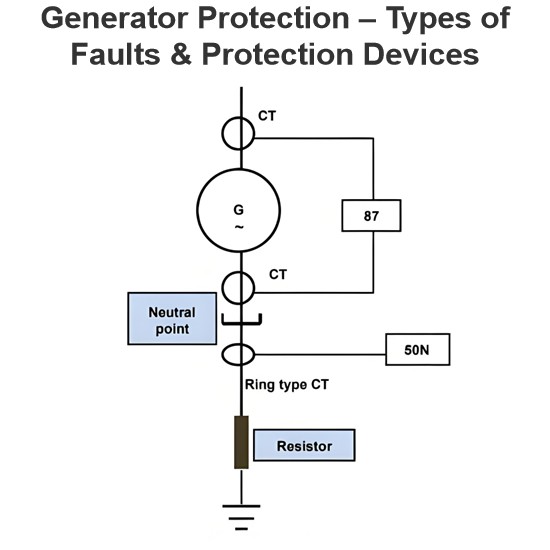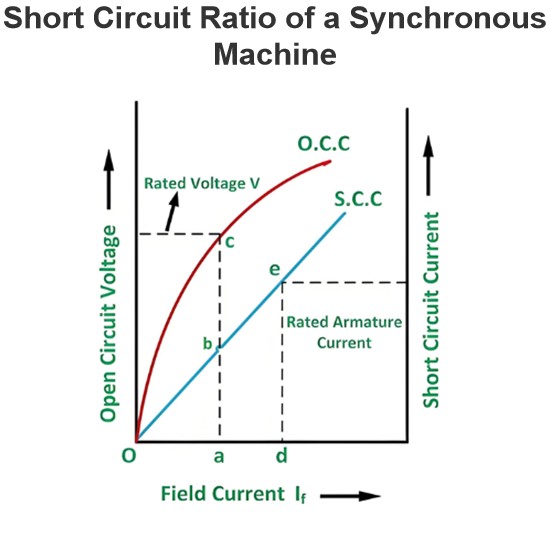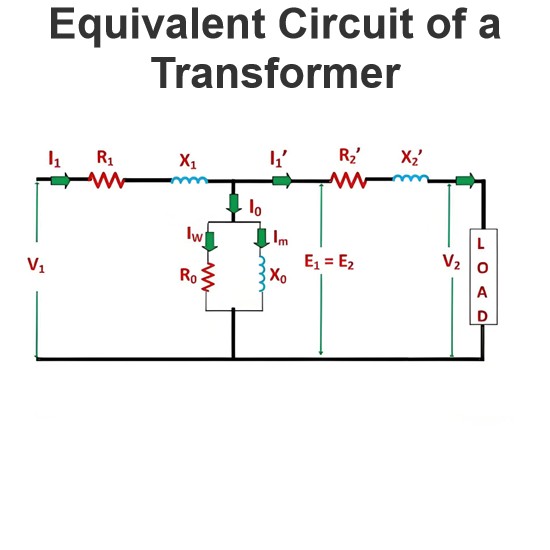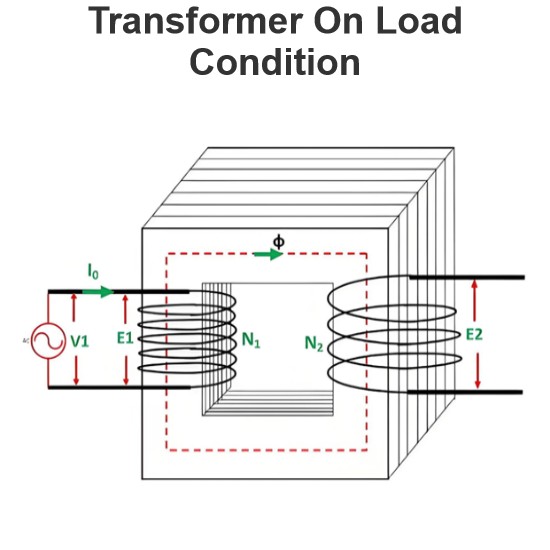Magnetization Curve of DC Generator
Magnetization Curve of DC Generator
Key learnings:
Magnetization Curve Definition: The magnetization curve of a DC machine shows the relationship between field current and armature terminal voltage on an open circuit.
Importance: The magnetization curve indicates the saturation of the magnetic circuit, crucial for understanding the generator’s efficiency.
Saturation Point: This point, also known as the knee of the curve, shows where further increases in field current yield minimal increases in flux.
Molecular Alignment: As field current increases, magnetic molecules align, increasing flux and generated voltage until saturation.
Residual Magnetism: Even when current is zero, some magnetism remains in the generator’s core, influencing the magnetization curve.

DC generator is that curve which gives the relation between field current and the armature terminal voltage on open circuit.
When the DC generator is driven by a prime mover then an emf is induced in the armature. The generated emf in the armature is given by an expression
is constant for a given machine.it is replaced by K in this equation.
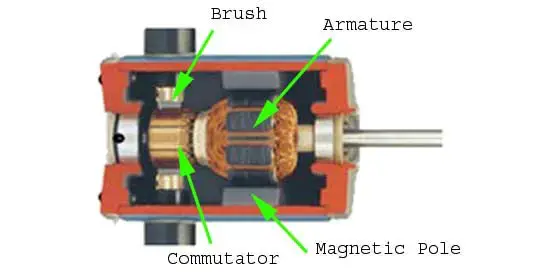
Here,
φ is the flux per pole,
P is the no. of poles,
N is the no. of revolution made by armature per minute,
Z is the no. of armature conductors,
A is no. of parallel paths.
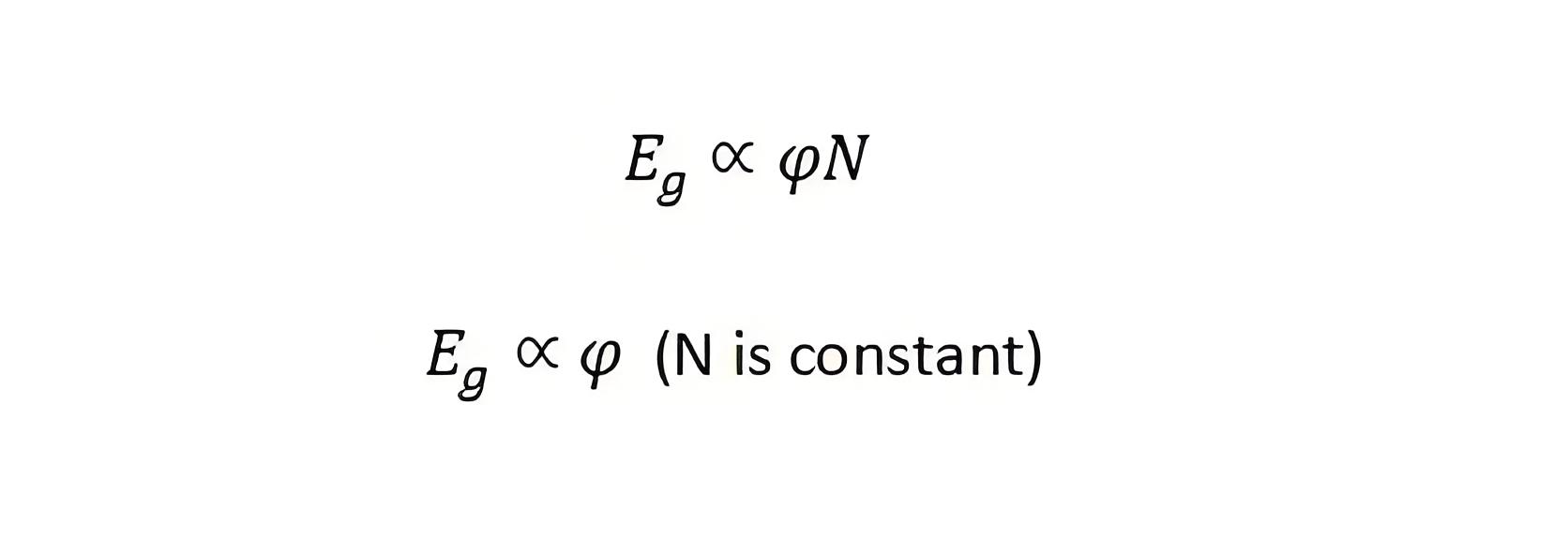
Now, from the equation we can clearly see that the generated emf is directly proportional to the product of flux per pole and the speed of the armature.
If the speed is constant, then the generated emf is directly proportional to the flux per pole.
As the excitation current or field current (If) increases, the flux and the generated emf also increase.
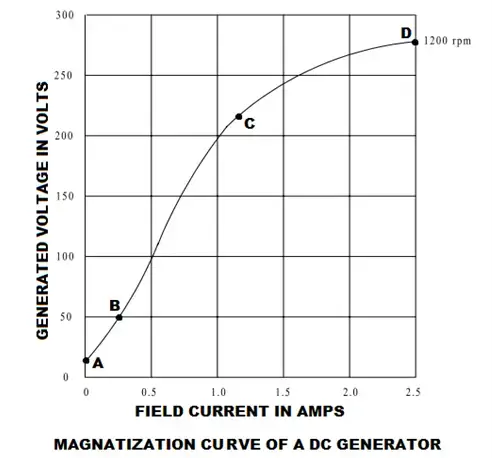
If we plot the generated voltage on the Y axis and field current on the X-axis then the magnetization curve will be as shown in the figure below.
The magnetization curve of a DC generator is important because it shows the saturation of the magnetic circuit. This curve is also known as the saturation curve.
According to the molecular theory of magnetism the molecules of a magnetic material, which is not magnetized, are not arranged or aligned in definite order. When current passed through the magnetic material then its molecules are arranged in definite order. Up to a certain value of field current the maximum molecules are arranged. In this stage the flux established in the pole increased directly with the field current and the generated voltage is also increased. Here, in this curve, point B to point C is showing this phenomena and this portion of the magnetization curve is almost a straight line. Above a certain point (point C in this curve) the nu-magnetized molecules become very fewer and it became very difficult to further increase in pole flux.This point is called saturation point. Point C is also known as the knee of the magnetization curve. A small increase in magnetism requires very large field current above the saturation point. That is why upper portion of the curve (point C to point D) is bend as shown in figure.
Magnetization curve of a DC generator does not start from zero initially. It starts from a value of generated voltage due to residual magnetism.
Residual Magnetism
In ferromagnetic materials, magnetic power and generated voltage increase as current flows through the coils. When the current is reduced to zero, some magnetic power remains in the coil’s core, known as residual magnetism. The core of a DC machine is made of ferromagnetic material.
The Electricity Encyclopedia is dedicated to accelerating the dissemination and application of electricity knowledge and adding impetus to the development and innovation of the electricity industry.
